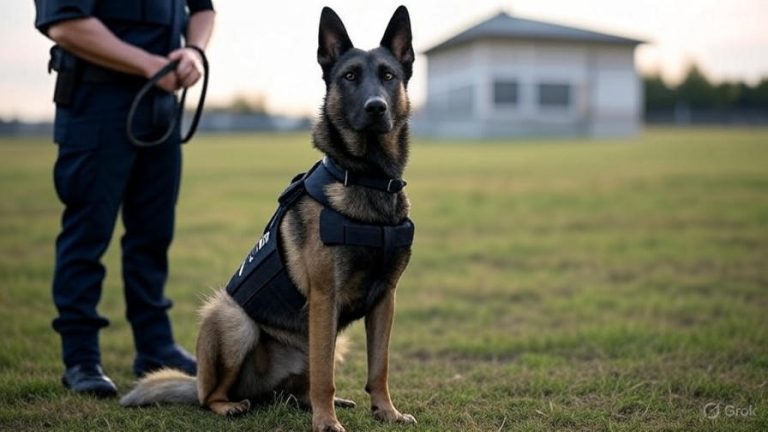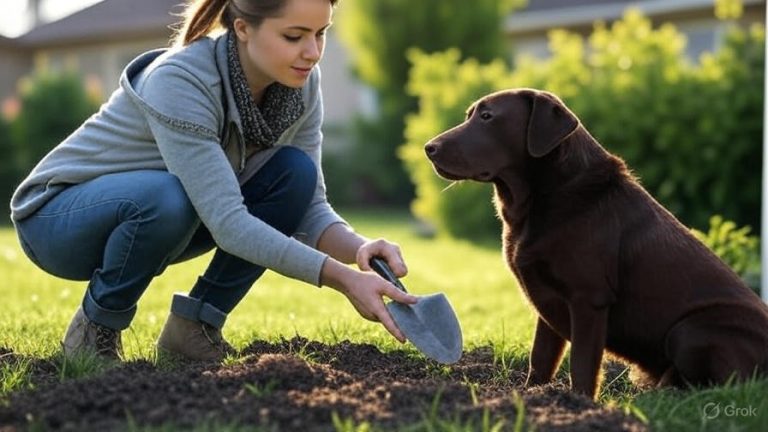How to Keep a Pet Safe During a Storm?
Storm season brings anxiety for both humans and their beloved animal companions. As dark clouds gather and thunder rumbles in the distance, our furry friends often sense the approaching danger long before we do. Pet owners face the challenging task of protecting their animals from nature’s most unpredictable forces while managing their own storm preparations.
Natural disasters affect millions of pets annually, with many becoming separated from their families or experiencing severe trauma during severe weather events. The key to successful pet storm safety lies in advance planning, proper preparation, and knowing exactly how to respond when dangerous weather strikes your area.
Creating Your Pet Emergency Plan
Every responsible pet owner needs a comprehensive emergency plan that addresses different types of severe weather. Start by identifying the most common storm threats in your region. Coastal areas face hurricanes and storm surges, while inland regions deal with tornadoes, severe thunderstorms, and flooding. Mountain communities prepare for winter storms and avalanches.
Your emergency plan should include multiple evacuation routes from your home and neighborhood. Practice these routes with your pets during calm weather so they become familiar with the process. Identify pet-friendly shelters, hotels, and boarding facilities within a reasonable driving distance. Many public emergency shelters don’t accept animals, so you need alternative options ready.
Document your pets’ medical information, vaccination records, and special needs in both digital and physical formats. Keep copies in waterproof containers and store backup copies with trusted friends or family members outside your immediate area. Include clear photos of your pets from multiple angles to help with identification if they become lost.
Establish communication with neighbors, friends, and family members who can assist with pet care during emergencies. Create a network of people who have keys to your home and know your pets’ routines, feeding schedules, and medical requirements. This support system becomes invaluable when storms hit unexpectedly while you’re away from home.
Building the Ultimate Pet Emergency Kit
A well-stocked emergency kit serves as your first line of defense during storm situations. Prepare separate kits for home, car, and workplace if you frequently travel with your pets. Start with basic survival supplies and expand the kit based on your pets’ specific needs and your regional weather patterns.
Food and water represent the most critical components of any pet emergency kit. Store at least seven days’ worth of your pet’s regular food in airtight, waterproof containers. Rotate stored food every few months to maintain freshness. Include manual can openers for canned food and collapsible bowls for easy transport. Calculate one gallon of water per pet per day for drinking, with extra for cleaning wounds or washing.
Medical supplies should include a first aid kit specifically designed for animals. Pack gauze, adhesive tape, antiseptic wipes, thermometer, tweezers, and any prescription medications your pet requires. Include a two-week supply of essential medications with clear dosage instructions. Add comfort items like favorite toys, blankets, or clothing that carries familiar scents to help reduce stress.
Sanitation supplies prevent health hazards during extended shelter periods. Pack waste bags, litter and litter box for cats, disinfectant, paper towels, and hand sanitizer. Include grooming supplies like brushes, nail clippers, and pet shampoo for maintaining hygiene during extended displacement.
Transportation equipment ensures you can safely move your pets when evacuation becomes necessary. Sturdy carriers or crates provide security during travel and temporary housing. Each pet needs their own appropriately sized carrier, clearly labeled with your contact information. Include leashes, harnesses, and muzzles as backup restraint options.
Storm-Proofing Your Home Environment
Your home serves as the primary shelter during most storm events, so preparing this space properly protects your pets from immediate dangers. Start by identifying the safest rooms in your house – typically interior rooms on the lowest floor, away from windows and glass doors. Basements work well for tornado protection but avoid them during flood risks.
Remove or secure outdoor items that could become projectiles during high winds. Patio furniture, garden tools, pet houses, and toys can cause significant damage when storms pick them up. Bring outdoor pets inside well before severe weather arrives. Never leave animals chained or tied outside during storms, as they cannot escape rising water or seek adequate shelter.
Create safe spaces within your home where pets can retreat during scary weather. Set up comfortable areas with their beds, toys, and hiding spots in interior rooms. Close curtains or blinds to muffle outside noise and block frightening lightning flashes. Consider using white noise machines or calming music to mask storm sounds.
Secure potential hazards throughout your home. Check that fence gates latch properly and repair any loose boards or wire that scared animals might break through. Trim tree branches near your house that could fall and create escape routes for panicked pets. Install battery-powered night lights in case power outages occur during storms.
Managing Pet Anxiety and Stress
Storm anxiety affects pets differently, with some showing mild nervousness while others experience severe panic attacks. Dogs often pace, pant excessively, drool, tremble, or try to hide in small spaces. Cats may become aggressive, refuse to eat, or eliminate outside their litter boxes. Birds can become extremely agitated and may injure themselves trying to escape their cages.
Recognize early warning signs of storm anxiety in your pets. Many animals sense atmospheric pressure changes and begin showing stress behaviors hours before storms arrive. Watch for subtle changes in appetite, sleep patterns, or social behavior that indicate growing unease.
Natural calming methods help many pets cope with storm stress without medication. Thundershirts or anxiety wraps apply gentle pressure that soothes nervous animals. Essential oil diffusers with lavender or chamomile create relaxing environments, but ensure any oils you use are safe for your specific pets. Some essential oils are toxic to cats and birds.
Maintain calm, confident energy around your pets during storms. Animals pick up on human emotions, so your anxiety can amplify their fears. Speak in soothing tones and provide gentle physical comfort if your pet seeks it. However, avoid excessive coddling, which can reinforce fearful behaviors.
Consider professional interventions for pets with severe storm phobias. Anti-anxiety medications prescribed by veterinarians can help during extreme weather events. Behavior modification training teaches pets to associate storm sounds with positive experiences through gradual desensitization and counter-conditioning techniques.

Evacuation Strategies and Transportation Safety
When authorities issue evacuation orders, you need quick, efficient methods to transport your pets safely. Never leave pets behind during evacuations, as they face deadly dangers from floods, fires, structural collapse, and inability to access food or water. Plan to evacuate early rather than waiting for mandatory orders.
Load pets into carriers or vehicles systematically to prevent chaos and escapes. Assign specific family members to handle individual pets if you have multiple animals. Practice loading procedures during calm weather so everyone knows their responsibilities. Keep carriers easily accessible near exit doors.
Secure pets properly during vehicle transport to prevent injuries from sudden stops or accidents. Place carriers on vehicle floors rather than seats where they could slide or tip. Use seat belts or cargo straps to anchor larger carriers. Never transport pets loose in truck beds or car trunks where temperature extremes and carbon monoxide pose deadly risks.
Plan frequent stops during long evacuation trips to allow pets to relieve themselves, drink water, and stretch. Pack portable water bowls and keep pets leashed at all times during stops. Many animals try to bolt when stressed, so maintain firm control even if they seem calm.
Finding Pet-Friendly Shelter Options
Traditional emergency shelters rarely accommodate pets due to health regulations and space limitations. Research pet-friendly alternatives in advance and maintain updated contact information for multiple options. Call ahead during storm warnings to confirm availability and reservation requirements.
Pet-friendly hotels often waive no-pet policies during declared emergencies, but space fills quickly. Book reservations as soon as weather forecasts show storm threats. Ask about specific pet policies, additional fees, and any restrictions on pet size or breed. Confirm that your pets’ vaccination records meet their requirements.
Boarding facilities and veterinary clinics sometimes provide emergency pet housing during severe weather events. These locations offer professional care and medical attention if needed. However, space is limited and typically reserved for regular clients, so establish relationships with local facilities before emergencies arise.
Friend and family networks provide ideal temporary housing when storms threaten your area. Reach out to relatives, friends, or coworkers who live outside the storm’s projected path. Arrange reciprocal agreements where you help shelter their pets during emergencies in exchange for similar assistance.
Post-Storm Recovery and Pet Care
After storms pass, new dangers emerge that threaten pet safety during recovery periods. Floodwater contains harmful bacteria, chemicals, and debris that can poison animals or cause serious injuries. Downed power lines create electrocution risks, while damaged buildings may collapse unexpectedly.
Inspect your property thoroughly before allowing pets to roam freely. Look for glass fragments, sharp metal pieces, toxic spills, and unstable structures. Check fence integrity to prevent escapes. Remove any standing water where mosquitoes might breed and spread diseases.
Many pets experience ongoing stress after traumatic storm events. Watch for changes in eating habits, sleep patterns, social behavior, and bathroom routines that might indicate emotional distress. Some animals develop separation anxiety and fear being left alone after experiencing storm trauma.
Document any storm damage with photographs before cleaning up, especially if you need to file insurance claims. Include pictures of damaged pet areas, destroyed supplies, and any injuries your animals sustained. Keep receipts for emergency pet expenses like boarding, veterinary care, and replacement supplies.
Special Considerations for Different Pet Types
Dogs require specific storm safety measures based on their size, breed, and temperament. Large dogs need sturdy carriers or may travel safely in vehicles with proper harnesses. Small dogs face hypothermia risks and need extra insulation. Flat-faced breeds like bulldogs and pugs struggle with heat and stress more than other dogs.
Cats present unique challenges during storm emergencies due to their tendency to hide when frightened. Start carrier training well before storm season since many cats resist confinement. Use synthetic pheromone sprays in carriers to create calming environments. Pack extra litter and familiar hiding boxes for temporary shelters.
Birds are extremely sensitive to environmental changes and require careful climate control during emergencies. Cover cages partially to reduce stress while maintaining adequate ventilation. Pack extra cage liners, perches, and appropriate food. Birds can die quickly from temperature extremes or toxic fumes from generators or heating equipment.
Small animals like rabbits, hamsters, and reptiles need specialized care during storm events. These pets cannot regulate body temperature effectively and require consistent environmental conditions. Pack battery-powered heating pads, extra bedding, and species-appropriate emergency foods. Research exotic animal veterinarians along evacuation routes.
Technology Tools for Pet Safety
Modern technology offers valuable resources for pet storm safety and recovery. Microchip identification provides permanent pet identification that cannot be lost or removed like collars and tags. Register microchips with current contact information and update details whenever you move or change phone numbers.
Weather alert apps send early warnings about approaching storms, giving you extra time to implement safety measures. Set up multiple alert systems since power outages can disable some communication methods. Include battery-powered or hand-crank radios in your emergency kit for weather updates when internet service fails.
Pet tracking devices help locate lost animals after storms displace them from familiar territories. GPS collars work in areas with cellular coverage, while Bluetooth trackers help with shorter-range searches. These devices require regular charging, so include portable battery packs in your emergency supplies.
Social media platforms become powerful tools for reuniting lost pets with their families. Post clear photos and detailed descriptions on local lost pet groups immediately if your animals go missing. Monitor these groups regularly since good Samaritans often post found pet information quickly after storms.
Building Community Support Networks
Strong community connections improve pet safety outcomes during storm emergencies. Join local pet owner groups, neighborhood associations, and emergency preparedness organizations to build support networks. Share resources, information, and assistance with fellow pet owners in your area.
Volunteer with animal rescue organizations to learn emergency response skills while helping your community. These groups need trained volunteers to assist with pet evacuations, temporary sheltering, and post-storm recovery efforts. Your involvement helps other pets while expanding your own emergency knowledge and contacts.
Partner with neighbors to create mutual aid agreements for pet care during emergencies. Exchange house keys, emergency contact information, and pet care instructions with trusted neighbors. This system ensures someone can help your pets if you’re unable to reach home before storms hit.
Support local businesses that provide pet-friendly services during emergencies. Patronize hotels, boarding facilities, and veterinary clinics that welcome displaced pets during disasters. These businesses need community support to maintain services that benefit all pet owners during difficult times.
Storm safety for pets requires advance planning, proper preparation, and quick action when severe weather threatens your area. By creating comprehensive emergency plans, building well-stocked supply kits, and establishing strong support networks, you can protect your beloved animal companions from nature’s most dangerous forces. Remember that your pets depend entirely on you for their safety and survival during storm emergencies. The time you invest in storm preparedness today could save your pets’ lives when severe weather strikes your community.







